In the Midst of a Revolution
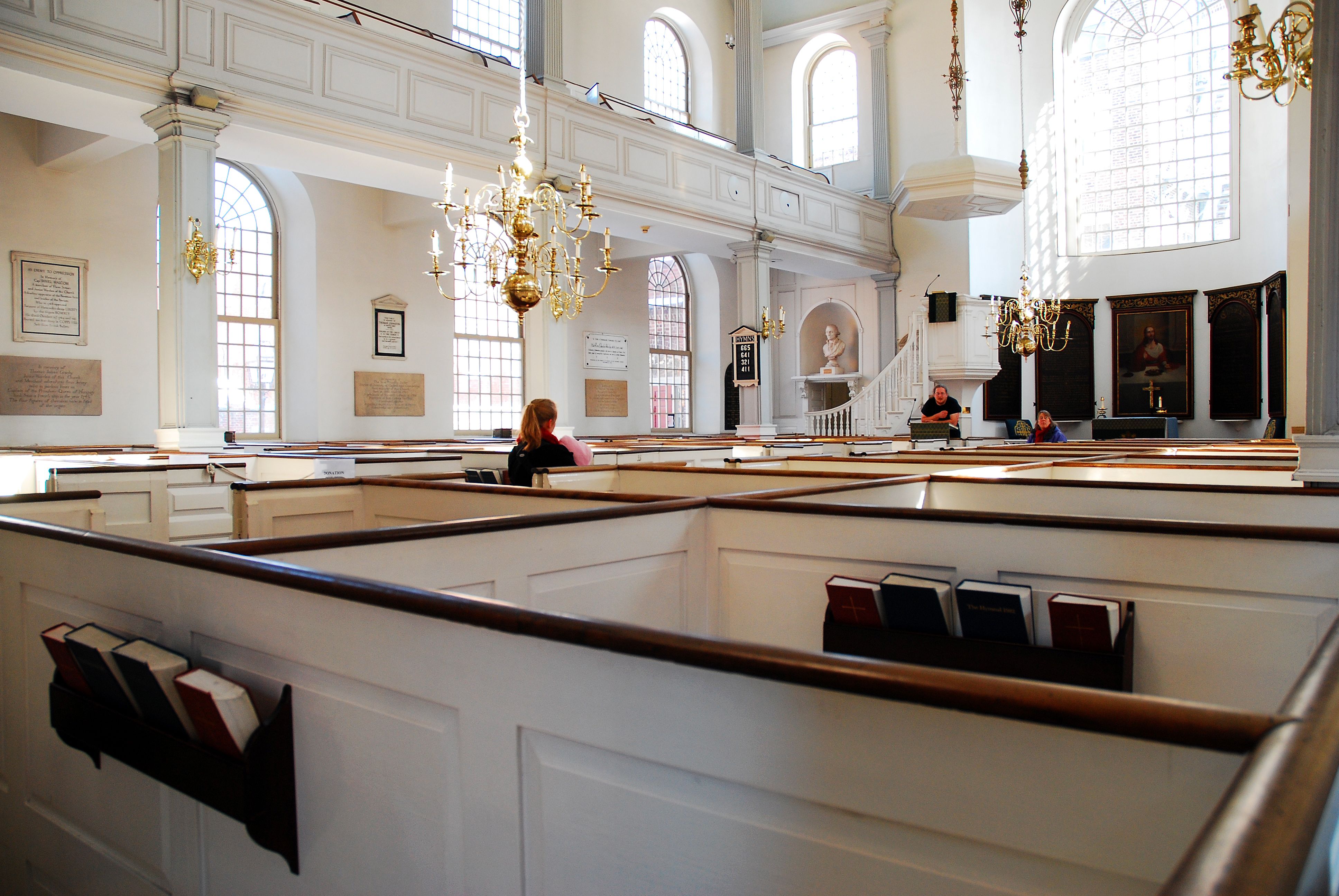
A cursory survey of recent articles about The Episcopal Church, featuring words such as decay, decline, and disruption, might easily lead one to believe that the Church is, in fact, dying. According to the General Convention’s Parochial Reports, membership and attendance were falling even before Covid-19 hit. In 2018–2019, marriages in the Church were down 11%, infant baptism fell 6.5%, and the number of adult baptisms decreased by 6.7%. Adding to this bleak outlook is the average age of our membership, which is 59, according to the 2019 Cooperative Congressional Election Report. (Catholics come in second, with an average age of 50.) In the summer of 2021, a group called Myriad, sponsored by the Gregory Centre for Church Multiplication, suggested that saving the Church of England from its precipitous decline would require shifting away from traditional priest-led parish models towards churches planted, and led, by laypersons. The proposal renewed the debate about the role of the priesthood and the future of the Church, and spawned a new round of articles tolling the bells for our denomination.
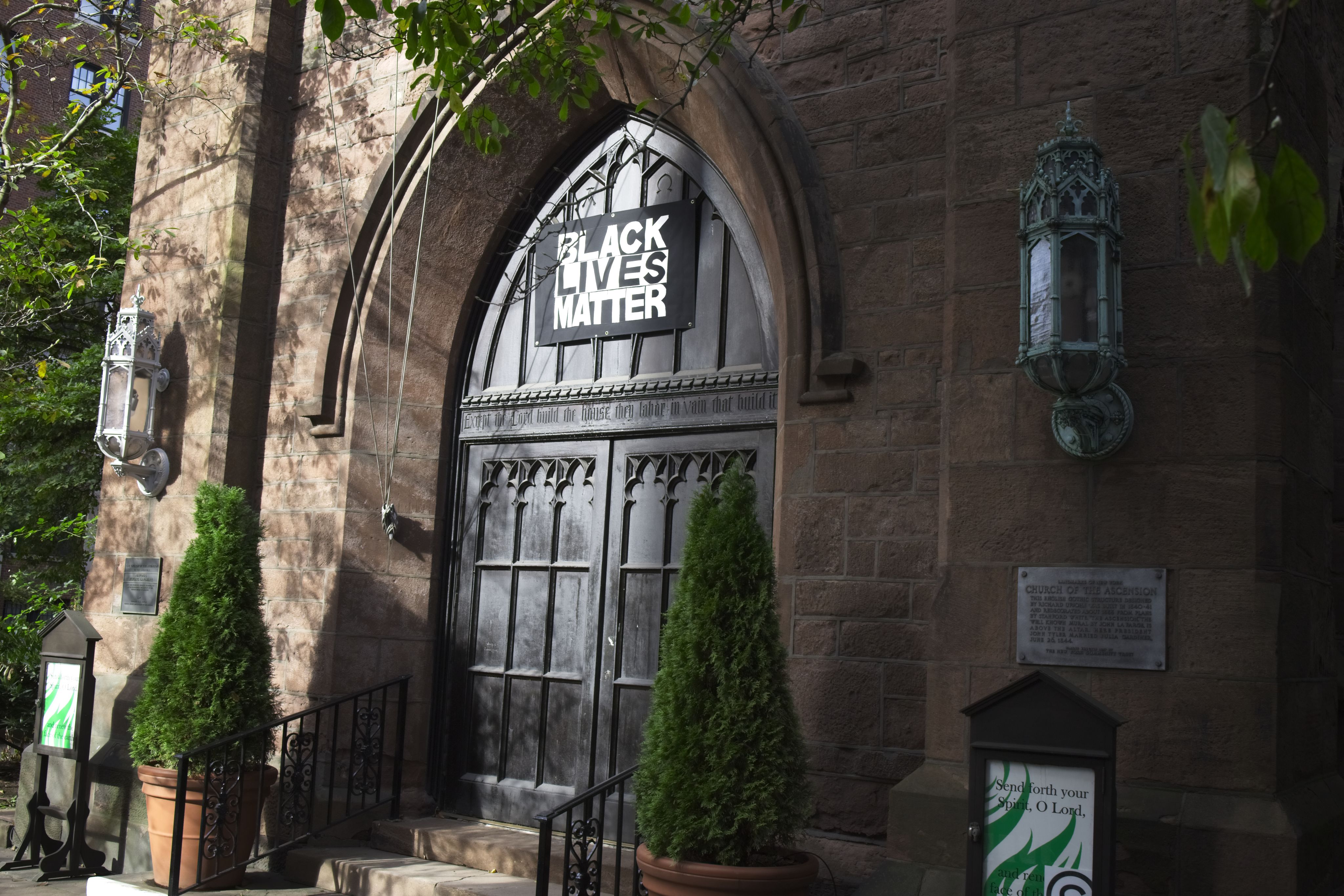
TO RISE AGAIN
Few people would argue that the Church is just as it was two, five, or 10 years ago. Even without the disruption wrought by Covid, The Episcopal Church has changed as a result of its intentional examination of issues like institutionalized racism that made it the privileged stronghold of educated, white, affluent Americans for over two centuries. Difficult questions have been asked about who we are and how well we are living into the Christian values we espouse, and the answers to these questions have changed the Church in ways big and small, even before the pandemic turned “business as usual” into a memory. But are these the actions of a “dying” Church? When you look at the work being done in The Episcopal Church—difficult and critical work involving racial reconciliation, refugees, domestic poverty, vaccine distribution, creation care, violence, LGBTQ support, and indigenous and Latin ministries—it seems clear that the Church is not dying, but rather evolving. As G.K. Chesterton wrote in The Everlasting Man, “Christendom has had a series of revolutions and in each of them, Christianity has died. Christianity has died and risen again, for it had a God who knew the way out of the grave.” Perhaps we Episcopalians are simply a faction of Christianity in the midst of a revolution, preparing a new way forward into the future.
When you look at the work being done in The Episcopal Church—difficult and critical work involving racial reconciliation, refugees, domestic poverty, vaccine distribution, creation care, violence, LGBTQ support, and indigenous and Latin ministries—it seems clear that the Church is not dying, but rather evolving.
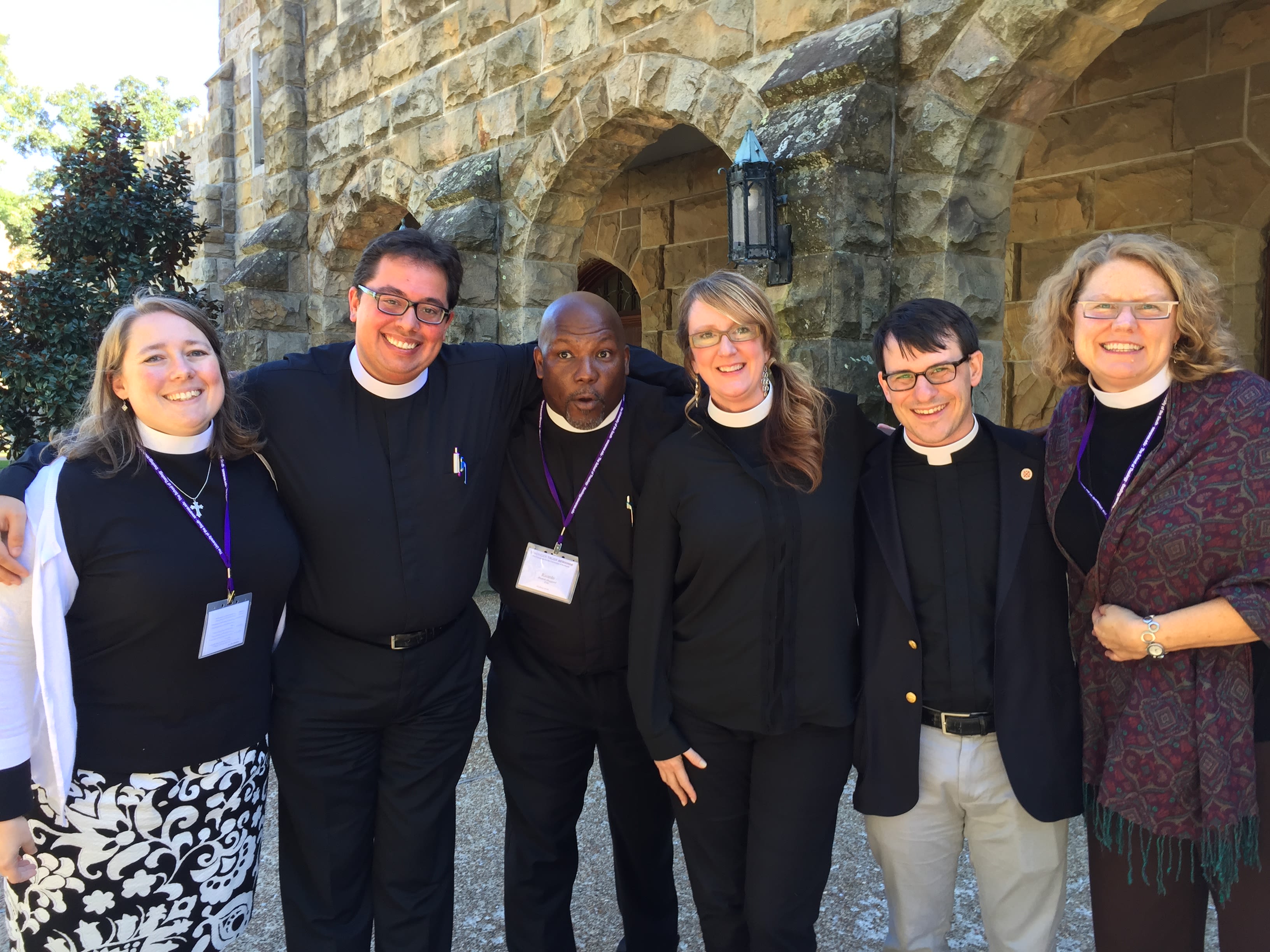
THE CLERGY OF THE FUTURE
The Church Pension Group’s 2021 Annual Report reports that, of its 14,000 active clergy, the average at ordination is 49, and three years ago, the Pew Report stated, in its Five Facts About Episcopalians, that nine out of ten of us are white. But change is afoot. The General Convention’s Task Force on Church Planting and Congregational Development prioritized connecting with underrepresented groups in 2018, resulting in 30 new ministries. People like Melanie Mullens, TEC’s Director of Reconciliation, Justice, and Creation Care, and the Rev. Canon Stephanie Spellers, Canon to the Presiding Bishop for Evangelism, Reconciliation, and Creation Care and author of the new book The Church Cracked Open, are at the forefront of these changes, inviting a reexamination of the Church’s past and a reimagining of the Church’s future. The intellectually aloof Episcopal priest with his hand-written sermons and cozy tweeds is an antiquated literary caricature as today’s clergy become increasingly engaged with the issues of the day. The “new model” priest more closely mirrors American society, and is equally likely to be a technologically savvy mother, a native Spanish-speaker, or a same-sex spouse with an agrarian bent—if not all three. The School of Theology’s current student body reflects those changes. Of the 25 students who joined the School of Theology in the past year, the median age is 38, more than half are women, and 16% are people of color.
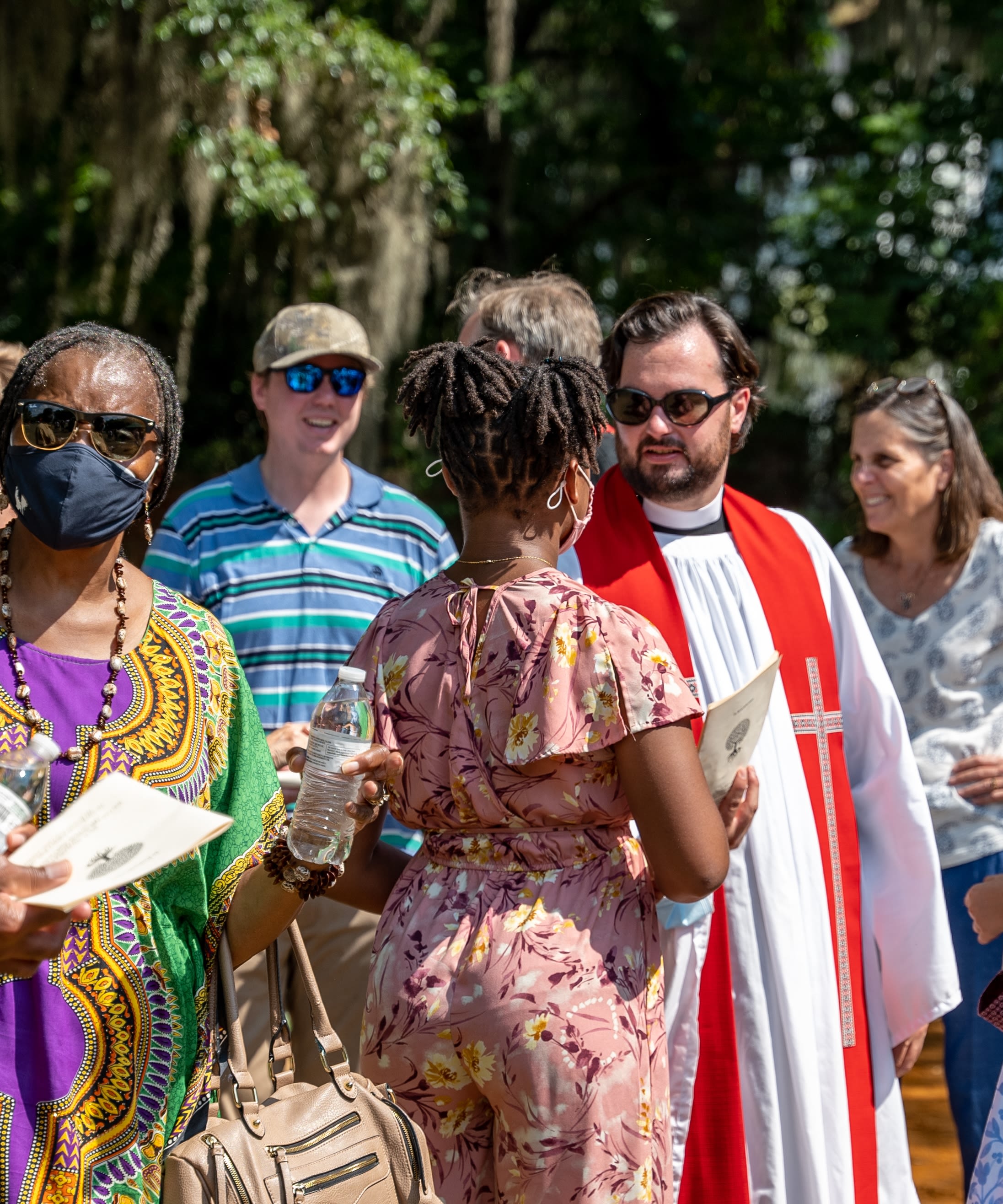
The Rev. Ryan Currie, T’18
The Rev. Ryan Currie, T’18
The Rev. Ryan Currie, T’18, who spent nine years in Sewanee, first in the College and then in the School of Theology, notes that the LGBTQ community is embraced, too. “There were always LGBTQ-friendly spaces and places in Sewanee,” Currie says, “but at the seminary, there was a real intentionality to be that way.” The curriculum of the School of Theology reflects the Church’s modern concerns, as well. In addition to the core courses, for instance, the School of Theology now offers a variety of classes in the intersection of theology and the environment, [for more on the School of Theology’s approach to creation care, see this recent story], as well as courses on beloved community, the history of missions in East Africa, the Church in Asia and Africa, and the university’s own difficult history with civil rights.
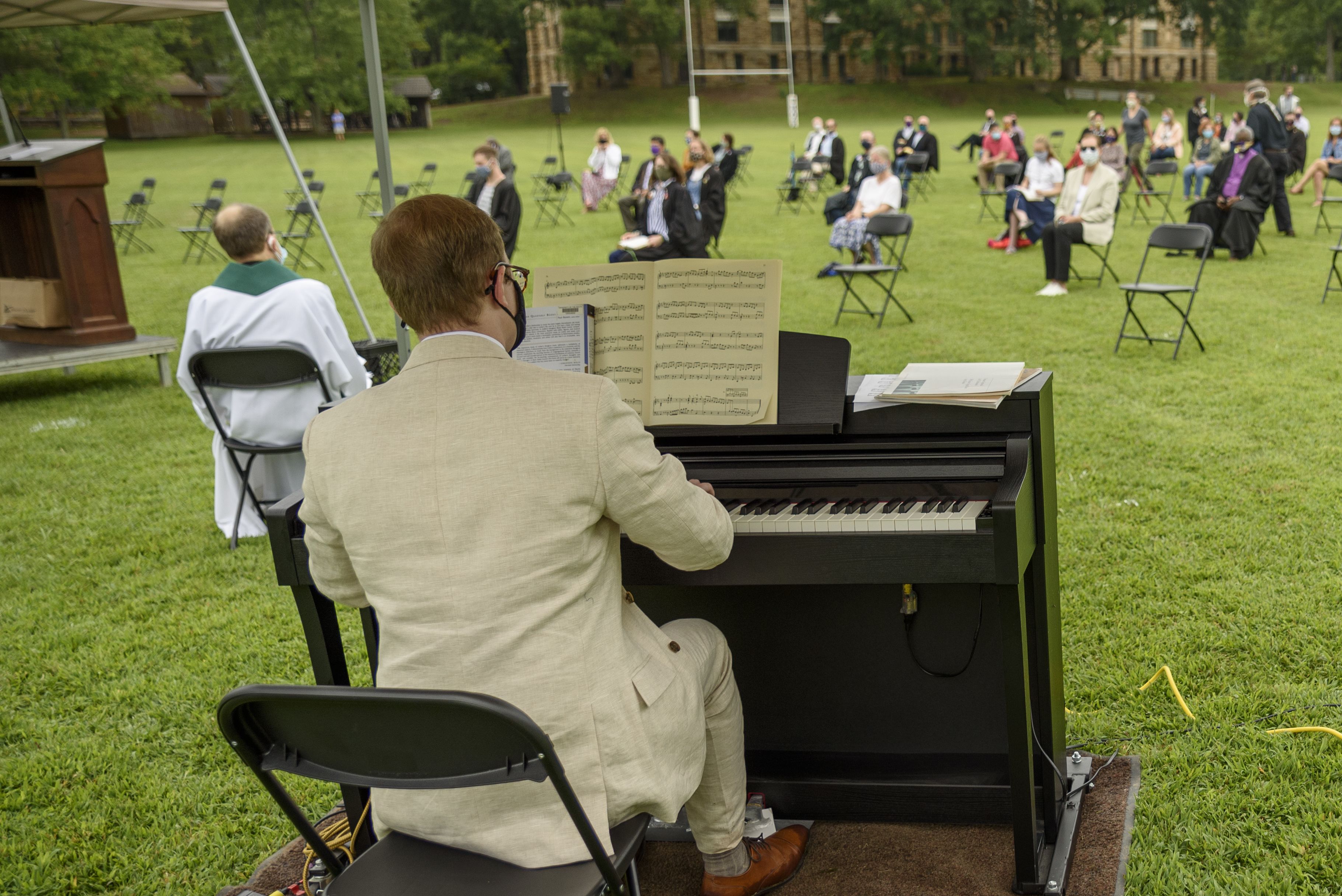
ADAPTING TO REMAIN RELEVANT
Of course, Covid-19 caused the Church, and seminary, to narrow its primary concern to safely navigating the pandemic as in-person worship and learning were deemed unsafe. Clergy around the country had to find new ways to stay connected, adapting to virtual services and conducting vestry meetings, Bible study, and even pastoral care, online.
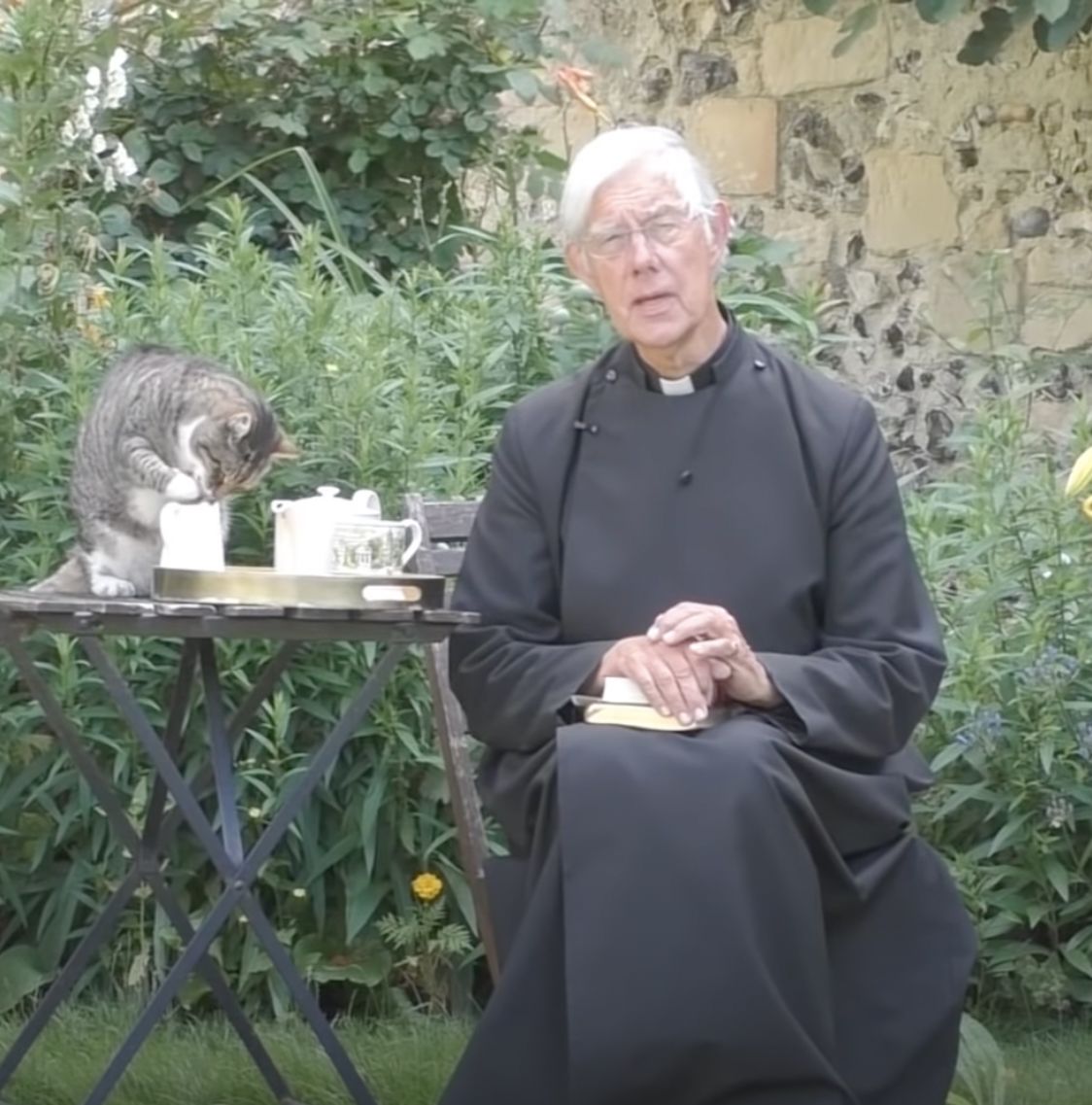
The Very Rev. Robert Willis, dean of Canterbury Cathedral
The Very Rev. Robert Willis, dean of Canterbury Cathedral
There were much-needed moments of levity amongst the exhaustion; who can forget the Italian priest who live-streamed Mass with several comical filters on, or the Very Rev. Robert Willis, dean of Canterbury Cathedral, whose mischievous cats spawned a thousand memes while interrupting the Morning Prayer services he delivered from The Deanery garden? In many cases, these adaptations proved very fruitful, and many priests report a surprisingly high level of engagement during the pandemic via online Bible study, book groups, and worship, and are continuing to offer these things even as in-person worship is gradually reinstated.
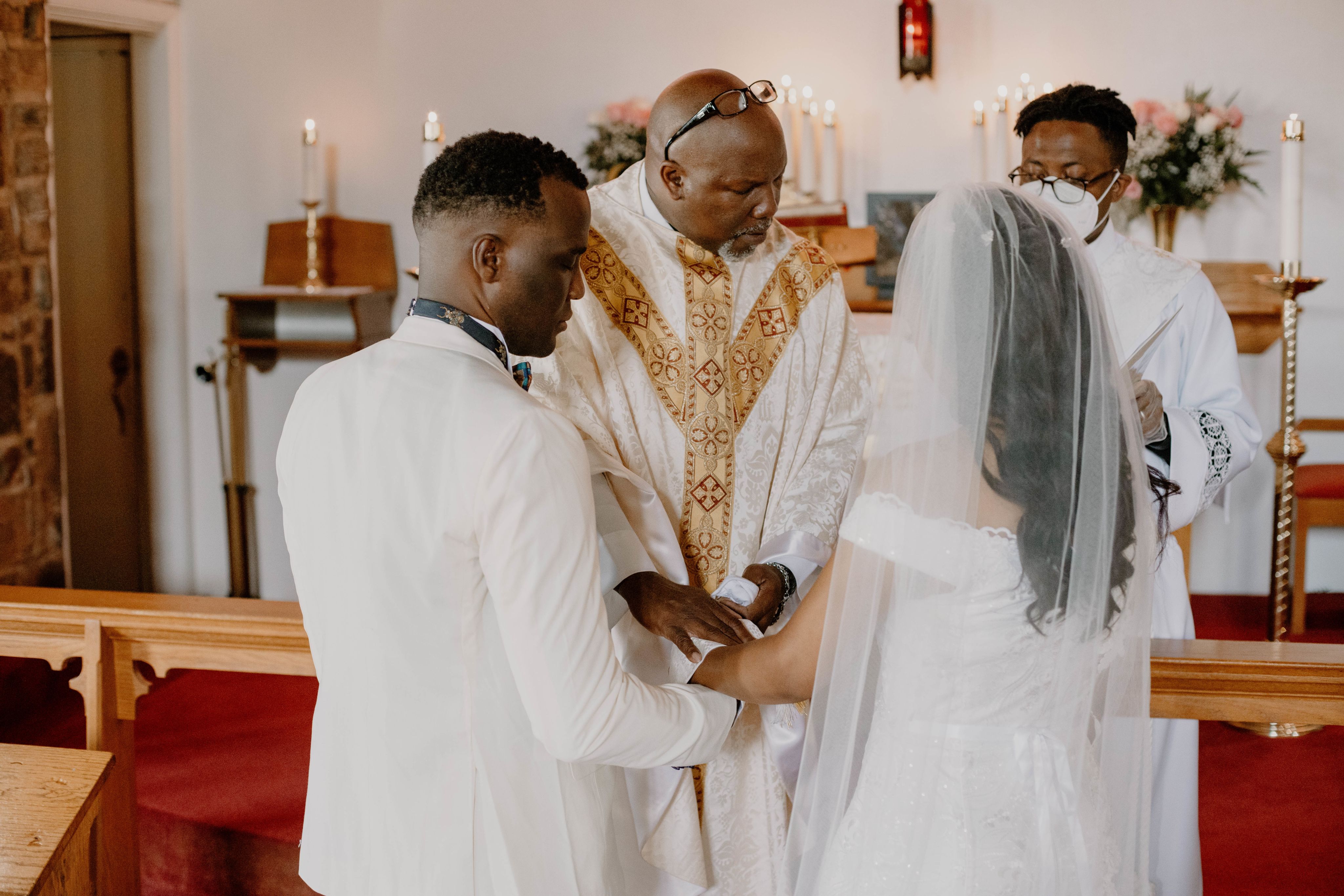
The Rev. Ricardo Sheppard, T’16
The Rev. Ricardo Sheppard, T’16
The Rev. Ricardo Sheppard, T’16, says that while it is true that he acquired new technology skills during the pandemic, some of which he will continue to employ in the future, he sees the changes wrought by Covid as just one in a long line of adaptations that modern clergy are required to make. “It’s true that in the past 18 months, I’ve had to learn how to edit videos and to become proficient on social media,” Sheppard says, “but I don’t think the role of the priest has changed as much as the situations and circumstances in which we do ministry have changed. As our communities change, priests have to adapt to meet the needs of those communities. If a priest is not willing to adapt to changing times, the Church will become just another country club that will eventually close.” The Rev. Harry Jenkins, T’11, seconds Sheppard’s thoughts. “I have learned a lot about virtual church. We livestream our services and we offer online prayer services several times during the week. I don’t particularly like doing bible study over Zoom, but it is a way to continue a study or class for people who cannot attend in person. And I do a lot more electronically now,” Jenkins says. “Newsletters, meetings, special announcements, and check-ins with people I have not seen. I make a lot of phone calls.”
“If a priest is not willing to adapt to changing times, the Church will become just another country club that will eventually close.”
While these digital modes of transmission may be new, at their core is the same essential function of a priest, says the Rev. Furman Buchanan, T’06. Buchanan cites Barbara Brown Taylor’s Leaving Church to describe the essential role of a priest, which Taylor characterizes as “someone willing to stand between a God and people who are longing for one another’s love, turning back and forth between them with no hope of tending either as well as each deserves.” To be a priest, Taylor writes, “is to serve a God who never stops calling people to do more justice and love more mercy, and simultaneously to serve people who nine times out of 10 are just looking for a safe place to rest. To be a priest is to know that things are not as they should be and yet to care for them the way they are.” Buchanan says that for him, Taylor’s definition “fits the exigencies of every age because she emphasizes the humble space which priests are asked to occupy between the holiness of God and the holiness of God’s ‘called out people,’ the ekklesia.” And no matter what channels of communication are used, Buchanan says, “in terms of substance, the Church has only ever had four basic gifts to perform the mission of God—water, bread, wine, and story. Whenever these gifts are blessed faithfully, received thankfully, and shared joyfully; the Kingdom of God is near.”
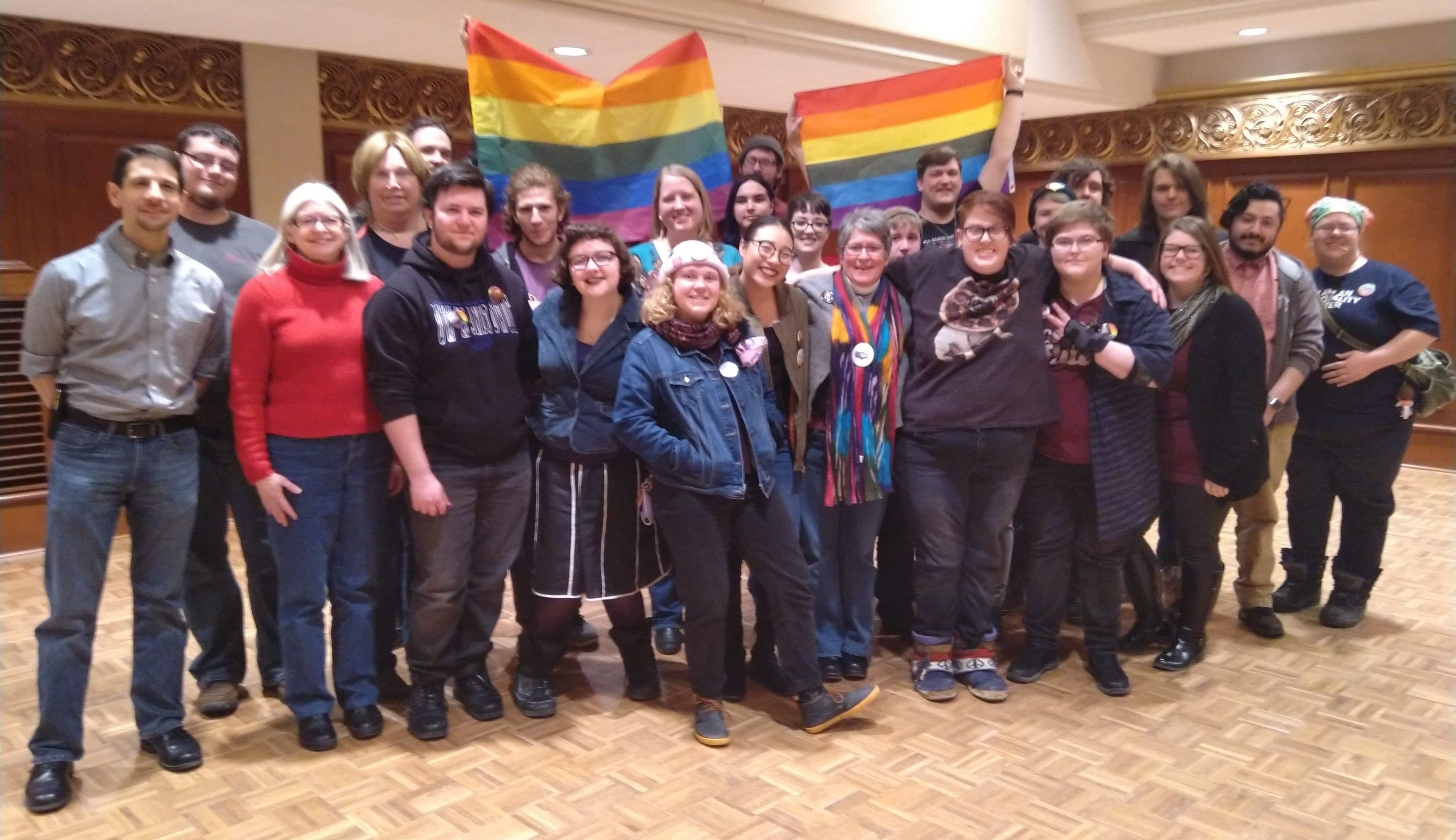
IN THE COMMUNITY
The Rev. Jane Johnson, T’11, has given a lot of thought to the role of a priest in the past few years. Experiencing feelings of disconnection and dissatisfaction, Johnson undertook a series of conversations and studies to discern the path forward, both for herself and for her parish. Too often, Johnson explains, the role of the priest is one of problem solver and dispenser of the sacraments, bible study, and pastoral care. Yet in acting as the problem solver, Johnson says, we “kick the Holy Spirit to the curb by assuming her role in our life together.” And when the priest acts as the “dispenser” of sacraments, education, and care, Johnson says, priests turn their parishioners into “consumers rather than active participants.” The question, she ultimately decided, was not a question of how to “fix” anything, but rather an essential question about how to live into the Kingdom. The role of a priest, she says, is to be one who “equips and empowers the saints by loving them, and to cast a vision of what it means to be citizens of God's Kingdom.” Part of living into the Kingdom, Johnson found, was increased engagement with the community, an undertaking her parish wholeheartedly embraced. [More about Johnson’s work can be found here, in a video collaboration with Luther Seminary as part of the Faith + Lead series.] These new community partnerships have led to a great deal of satisfaction, both for Johnson and for her parishioners.
The Rev. Abigail Moon, T’11, agrees that connecting to the community is one of the most important components of being a priest. “Listening deeply to the community’s needs and fostering a sense of partnership with our parish” is extremely important, Moon says, as it provides opportunities for “sharing good news and hope in a world where polarity exists.”
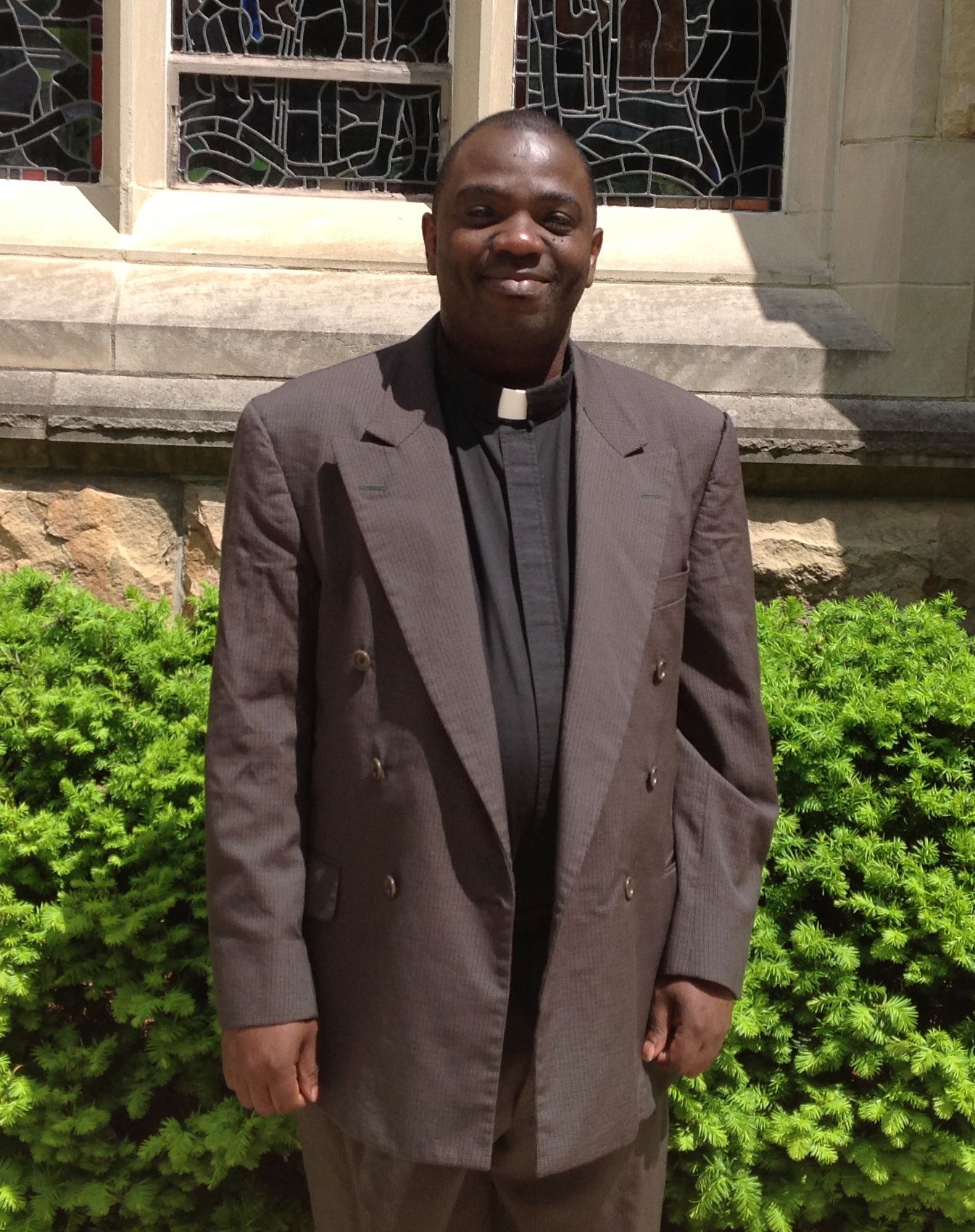
The Rev. Bart Segu, T’16
The Rev. Bart Segu, T’16
The Rev. Bart Segu, T’16, who ministers in Tanzania, also sees the needs of the community, and the external pressures the community faces, as being the primary factors that influence his role, as he is called to respond to those needs and pressures. “In my view,” Segu says, “the role of the priest has mainly been influenced by socio-economic, political, and cultural issues such as gender inequality, racial discrimination and other various forms of injustice. Climate change, the decrease in church membership, Pentecostalism, religious extremism, poverty, political instability ... all of these things shape the role of a priest.”
The role of a priest, then, Sewanee alumni would agree, is fundamentally the same as it has always been, albeit augmented with new skills, an outward-facing focus, and adaptations made necessary by social and cultural shifts. The proposal by Myriad that was released over the summer, however, seemed to suggest that priests were something of costly impediments to the future of the Church. This suggestion was reinforced when the group’s Executive Director Canon John McGinley, stated that “When you don’t need a building and a stipend and long, costly college-based training for every leader of church ... then actually we can release new people to lead and new churches to form.” In the uproar that ensued, Myriad was quick to clarify that they were not suggesting that priests were unnecessary, but rather that the Church’s future lies in the hands of priests and laity. This brings us to an interesting question: What is the role of the laity, in the eyes of the School of Theology's alumni?

ENGAGING LAITY
For Harry Jenkins, engaging laypersons in his parish is critical. “Unless I engage my members, I lose them. They drift off and away. I try to create as many different opportunities for lay involvement as possible. In the last two years, for instance, a group of parishioners have faithfully helped me to lead morning prayer, noon prayer, and compline virtually during the week on Facebook Live. Another group of parishioners like to cook, and they have been involved in fundraisers where they sell dinners with proceeds going to support the church.” Abigail Moon says that parishioners play a vital role in her church, too. “Each ministry at St. John’s is chaired by parishioners. Immediately after New Member Classes, members are engaged with ministries, giving them an open door to share their gifts of time, talent, and treasure. Our vestry is a working vestry, and any new initiative requires not just staff collaboration but also parishioner leadership.” Moon’s parish has even begun a Sunday evening service featuring lay preaching. “Where Life and Faith Intersect is a new initiative,” Moon explains, “and it allows our congregation to realize the common ground they all stand on, and the depth of faith that resides in each person.”
Segu agrees with the importance of engaged laypersons, saying that in his opinion, “a church that does not fully engage laity in its mission is a dying church. Indeed, such a church does not need to exist.” It is important, Segu says, that priests see the talents of the laity as blessings to the church rather than as threats to the priesthood, and explains that an engaged laity is proof of our equal standing before God, our equal standing as witnesses of the Good News, and our shared nature as equal recipients of the diverse talents and gifts that are given to us so that we might build the body of Christ. “Priests and laity need each other,” Segu says. “But in terms of the sustainability of both the church and a priest’s ministry, priests need laity more than the laity needs priests.” In return, Segu strives to empower each member of his church, and imbue them with a sense of ownership in the church.
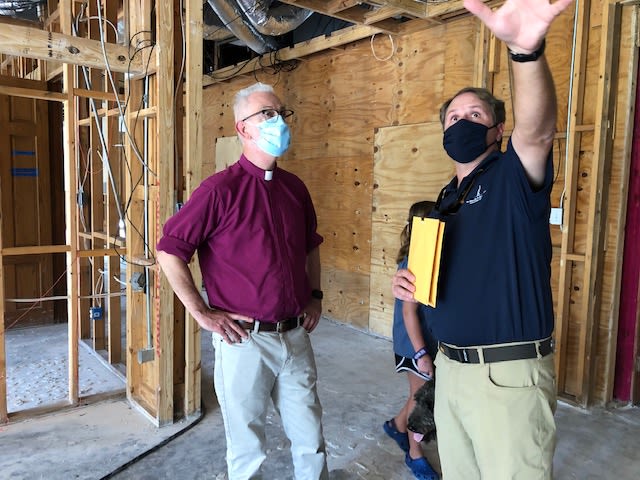
Seth Donald and Bishop Jake Owensby
Seth Donald and Bishop Jake Owensby
The Rev. Seth Donald, T’15, agrees that laypersons in the church fill critical roles, and says that they do so by design. “When we ask the question ‘Who are the ministers of the Church?’ we respond by saying ‘the ministers of the Church are lay persons, bishops, priests, and deacons.’” The Church, Donald says, upholds the ministry of the baptized at the parish level, as well as the diocesan and national level. “We may not emphasize the current leadership role of the laity, but we should. The laity are ministers by virtue of their baptisms and are called on to be witnesses to Christ’s reconciling love and to ‘to take their place in the life, worship, and governance of the Church.’” Donald relates an anecdote about embracing the work of a layperson in his parish. “I asked someone to serve as a lay eucharistic minister. Their response expressed a feeling of unworthiness. So I asked that they serve until I could find someone ‘worthy.’ Needless to say, they are still serving in this capacity years later. None of us are ‘worthy,’ but God uses us with our flaws to carry out the work of God’s Kingdom.”
When thinking about the role of laypersons in his parish, Buchanan likes to keep an aphorism in mind: All parish ministry is interim ministry. “St. Paul explained it first to the Corinthians,” Buchanan says. “Neither the one who plants nor the one who waters is anything, but only God who gives the growth.” (1 Corinthians 3:7) Buchanan admits that priests often struggle to rely on laypersons, whose standards and methods might differ from their own, but insists that mutual trust between clergy and laity is essential. “The best preposition to describe the proper place of a parish priest is ‘alongside,’” Buchanan says. “I like this placement because it seems in accord with the ways of God. ‘Alongside’ is the Divine modus operandi, as illustrated through the incarnation. Christ redeemed the world from alongside the weary souls and bodies of Galilee, Samaria, and Judah. Christ’s compassion—suffering with us—continues to be most palpable alongside our most difficult trials.” Leading a congregation committed to ‘with’ and ‘alongside’ ministry is more challenging, Buchanan admits, but also more rewarding. “It requires building a culture that is both invitational and overflowing with gratitude for the graces and mercies with which people respond to the call of God, the call of Love.”
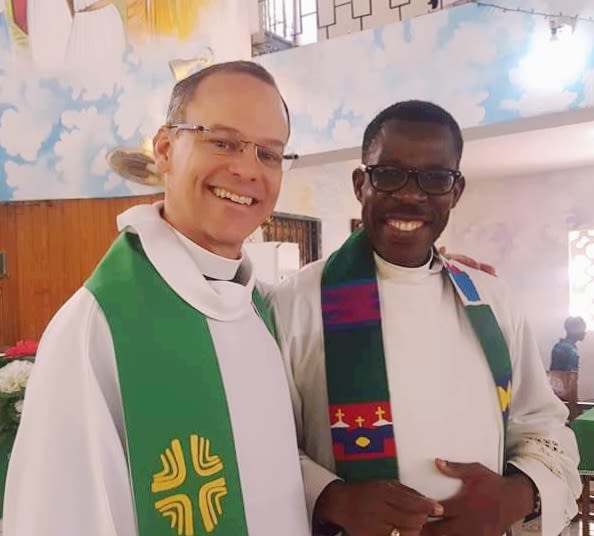
Furman Buchanan, T’06, and Hyvenson Joseph, T’04, in Haiti.
Furman Buchanan, T’06, and Hyvenson Joseph, T’04, in Haiti.
The Rev. Derrick Hill, T’11, says that when he first arrived at his current parish, he inherited a SWEEPSA (stewardship, worship, evangelism, education, parish life, administration) model of vestry and ministry. In this model, each vestry member was in charge of a particular ministry, which meant each vestry member advocated for his or her particular group—and for that group’s slice of the budget. “We have since left that model and have developed three “visioning teams” of community, worship/formation, and stewardship,” Hill says. “Each team consists of four vestry members, and the three teams basically form a Venn diagram where all three visions overlap, thus providing the parish with a particular focus for each year. It is messier, without a direct line of accountability, but the results are more fluid and allow for more experimentation,” Hill says. “I think it allows the Holy Spirit into the room.”
Sheppard says that listening is the greatest gift a priest can possess when it comes to the laity, and technology has helped enormously in his efforts to be an engaged listener and partner to his laity. “When I have conversations with people and listen to their thoughts and truly build relationships with them,” he says, “then I can begin to engage them in a direction that is truly helpful to them. In this digital age, I have been able to have my senior sages, who range in age from 60 to 100, watching the service online. Who would have imagined that happening in the church? That allows me another opportunity to listen to them and build relationships.”
“Priests and laity need each other,” Segu says. “But in terms of the sustainability of both the church and a priest’s ministry, priests need laity more than the laity needs priests.”
When it comes to laypersons, Johnson says, “love comes first and along with that, formation: Bible studies, worship that shapes and engages (not just asking folks to be passive consumers), and then connecting folks and their gifts with God's work.” Johnson says she has stepped away from “creating” ministry. “That’s problem solver thinking,” she explains. Instead, Johnson says that when people bring ideas about ministry to her, “my job is to ask about what they are hearing, and to do some questioning to see if the idea has legs. And then I discern what, if anything, I can or should do to provide support. Sometimes that is asking questions. Sometimes that is connecting to resources. Sometimes it is being part of the launch team for a while, to get it up and running.” Other times, Johnson says, her role is to say, “It sounds like this is a ministry that has come to an end. How do we give it a good and healthy farewell?”
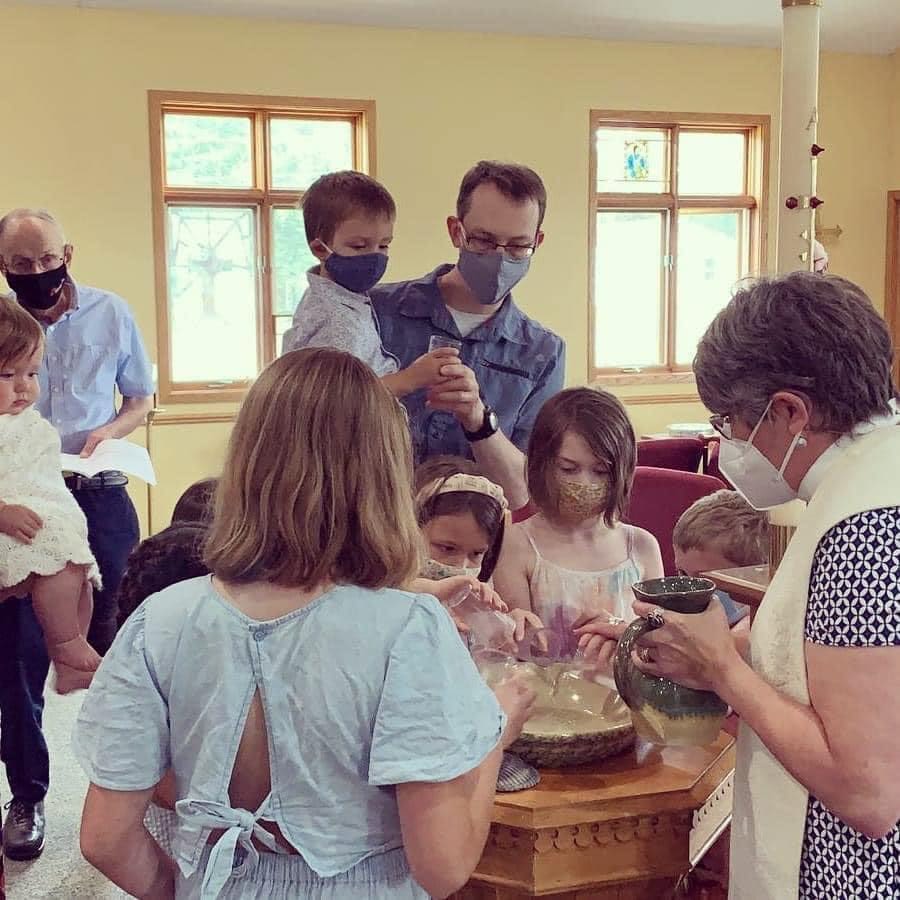
Johnson’s parish enjoys a community gathering.
Johnson’s parish enjoys a community gathering.
Johnson’s parish joined with five others to create One Big Tent, an organization dedicated to fostering relationships in the community and helping solve community problems of all kinds. “This involves connecting neighbors to community resources and, when needed, asking the connected churches to fill in the resource gaps. We have also been expanding how we have our folks care for each other, asking them to do the work of keeping in touch with one another and calling in others if more intensive pastoral care is needed,” Johnson explains. All laypersons in the church are encouraged to ask, “What is God up to? Where is God working and how can I/we join in? After all,” Johnson says, “this is the work of the community, not just the priest’s role.”
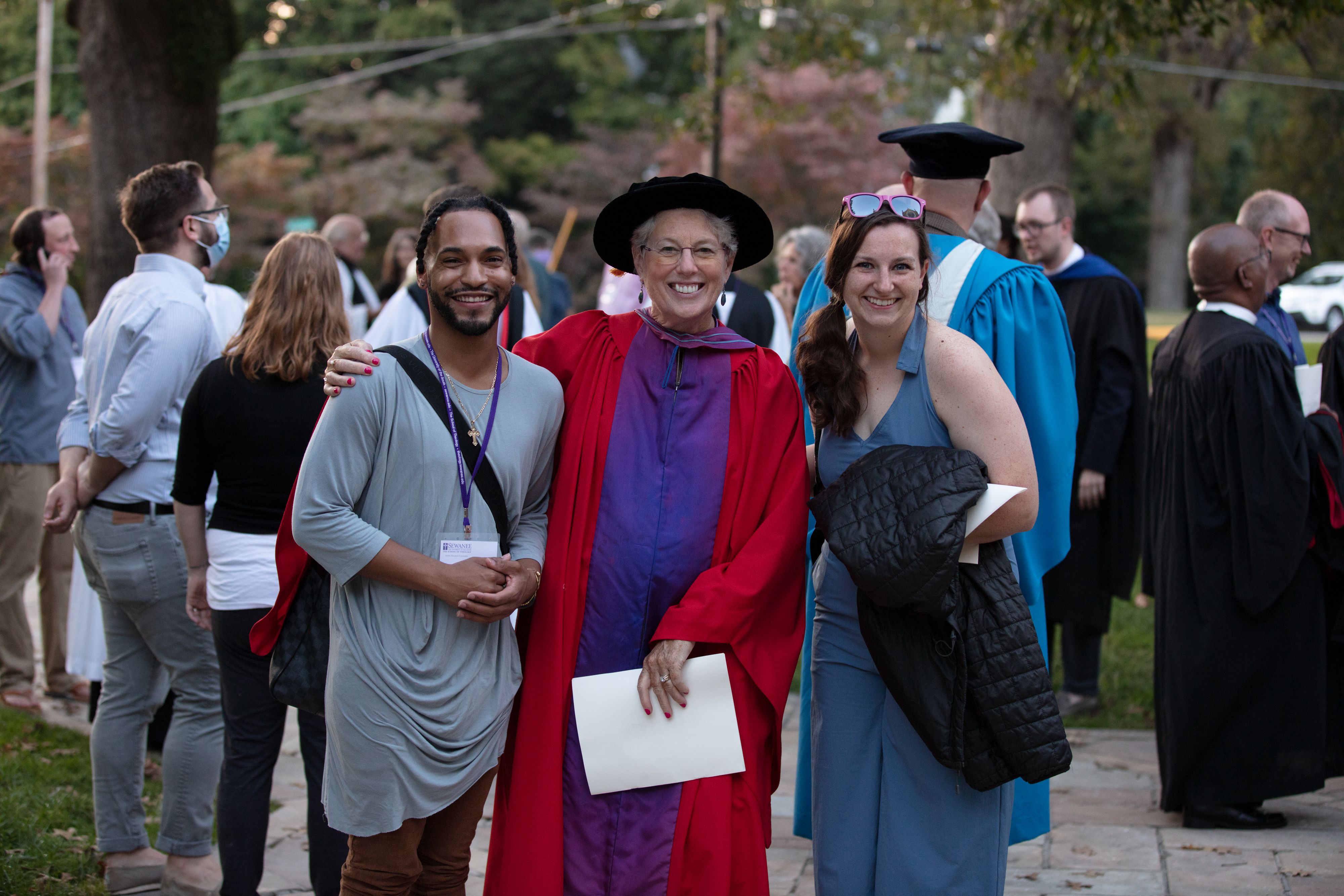
THE IMPORTANCE OF COMMUNITY
Living and working in community is, of course, a large part of the seminary experience. Yet as the profile of the “typical” seminarian has expanded from a young to middle-aged white male to include mothers, single and divorced people, and young men and women, some have questioned whether the three-year, residential model of seminary is necessary for everyone.
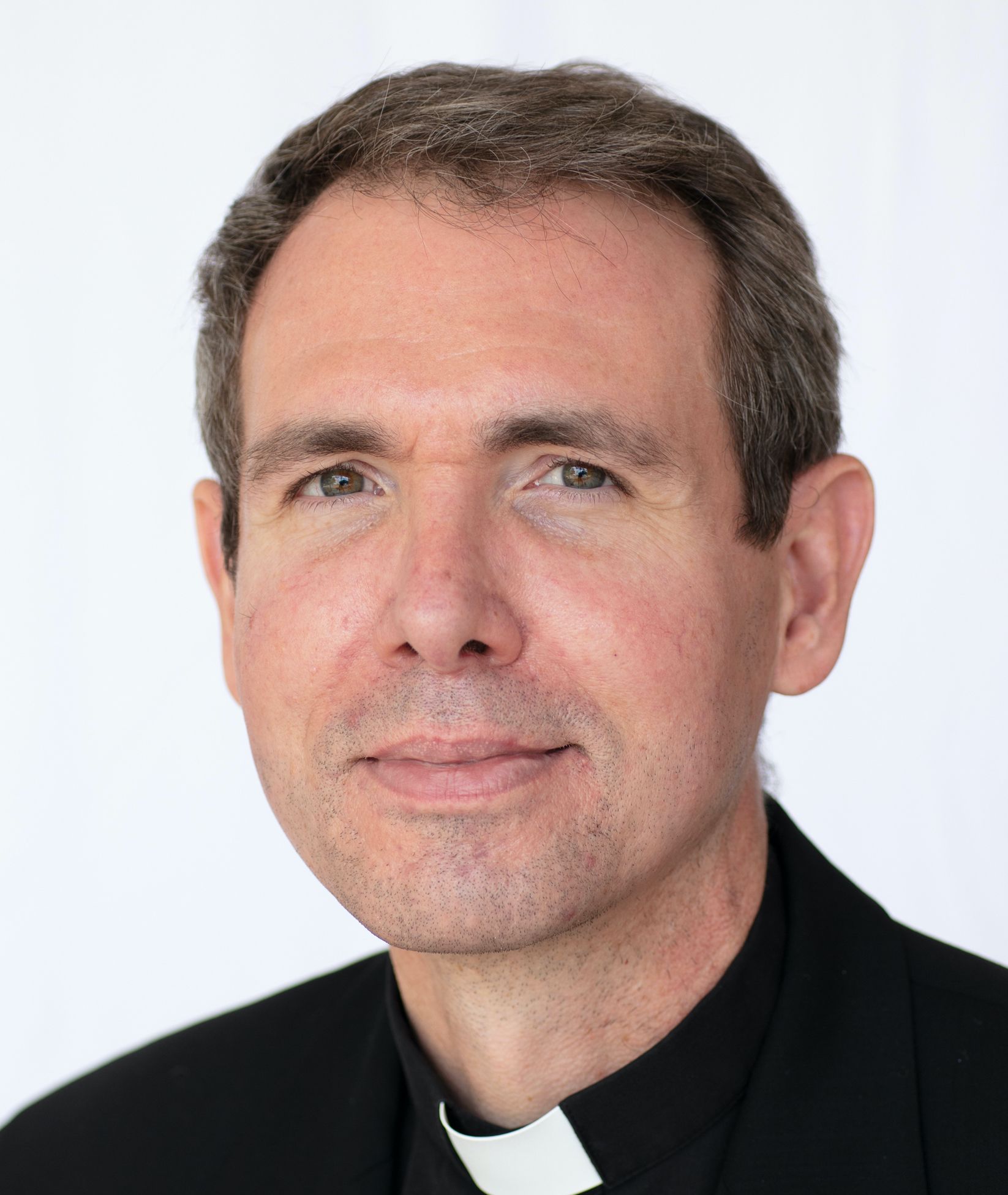
The Rev. Dr. Benjamin King
The Rev. Dr. Benjamin King
The School of Theology’s Academic Dean, the Rev. Dr. Benjamin King, says that in addition to being necessary for skill development, it is also a critical component of formation. “The experience during Covid really demonstrated this. The Junior class had to be separated into two pods to attend class socially distanced. They only had the opportunity to get to know half of their classmates, and they missed out on the time spent in community that other classes took for granted. Having a worship life together, taking meals together, simply being together in community, these are the things they craved.”
Jenkins agrees that seminary taught him how to live in community. “Embracing the support of classmates and developing a rule of life that includes personal prayer, as well as community worship, was key.” Moon agrees. “Seminary was great preparation for being kind and working together,” she says, and “he rhythm of a life of prayer was taught in seminary, and it is essential to ministry.” Currie explains the importance of the seminary’s community life this way: “Seminary demands that you work on relationships. It is a crucible that forms your identity, and if you’re going to succeed in seminary, it’s going to be with your classmates, not alone. That’s a great preparation for parish ministry, because it teaches you that being vulnerable and sharing yourself, and building relationships based on trust, is the key to navigating difficult challenges and conversations.”
“Seminary demands that you work on relationships. It is a crucible that forms your identity, and if you’re going to succeed in seminary, it’s going to be with your classmates, not alone.”
Sheppard attended Sewanee for Anglican Studies, having received his M.Div. from Princeton, and says that for him, as well, the great benefit of Sewanee was the formation. “It was the ability to gather in classes with other seminarians who were working to become priests, just like myself. It was listening to different perspectives, learning from each other, that was most helpful to me. It was not a class but a combination of classes. It was not a professor but a cumulative effort of all.” Segu credits the School of Theology for providing a “holistic education which touched some stressing contemporary issues affecting both the church and society, such as climate change, gender inequality, church and politics, social justice, racial discrimination, religious extremism, human trafficking, political instability, and human rights.” Segu says the classes he took in the School of Theology and in Education for Ministry inspired his current doctoral work in systematic theology and his work in Tanzania to bring medical care and cook stoves to the public. The opportunities the seminary provided, to preach and present projects, helped Segu polish several essential skills. “The seminary was also a right place for me to make new friends, and to experience the love, generosity, and hospitality of the American people,” he says.
For Johnson, “the history of liturgy and history of church, learning about pastoral ministry and community ministry and what it means to be a shepherd of others served as a good grounding and centering so that any explorations and innovations in the future come from the reality of our past.” Johnson cites Lisa Fischbeck’s book Behold What you are: Becoming the Body of Christ to further explain that the education she received at the School of Theology allows her to be, as Fischbeck puts it, “... rooted in the traditions of the church but not bound by them….” Donald points to the Rev. Dr. Julia Gatta’s classes as having been particularly helpful to him in his life as a priest. “Christian Spirituality and pastoral classes grounded us in the Christian tradition and our shared call to be pastors, priests, and teachers.”
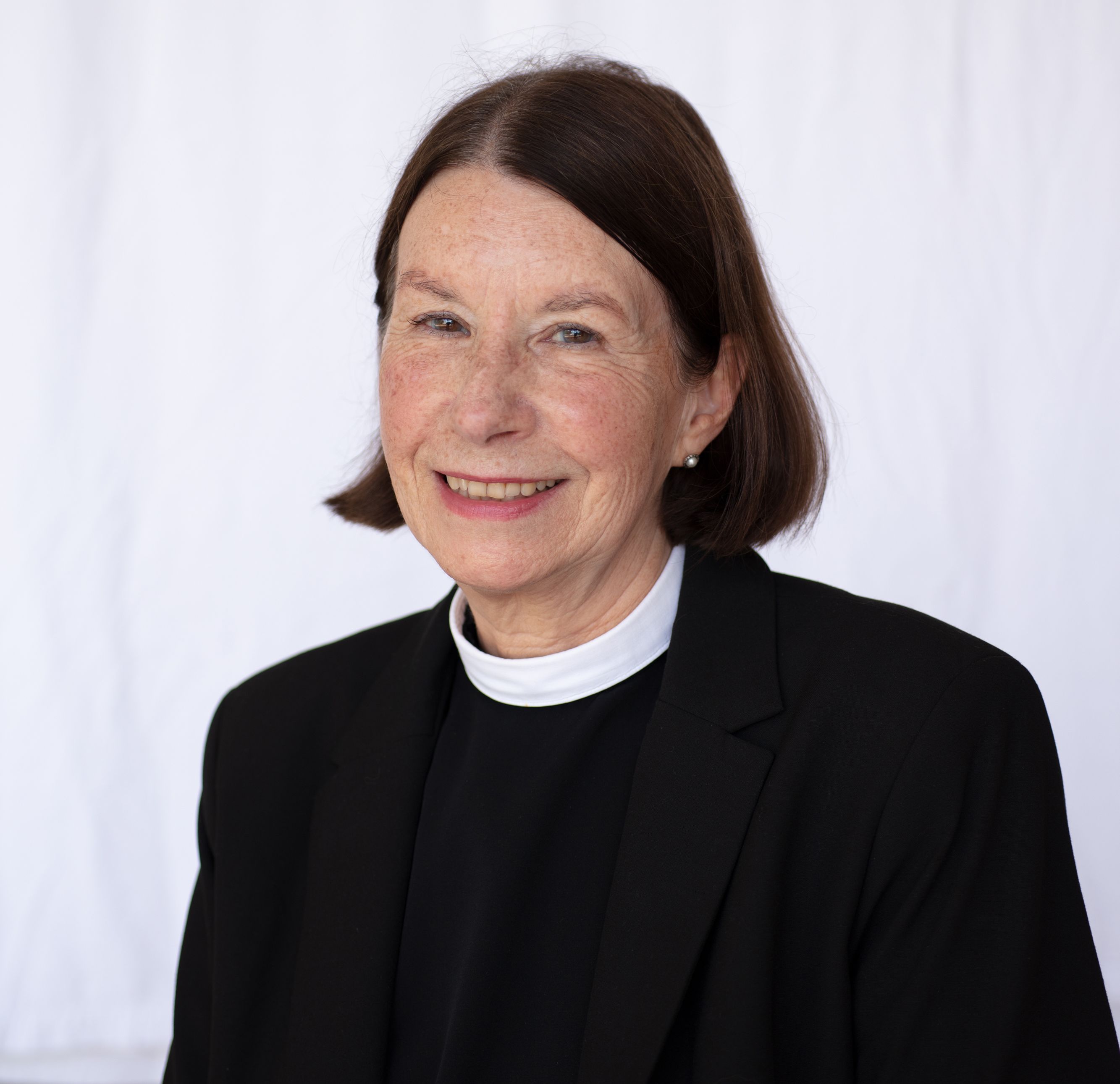
The Rev. Dr. Julia Gata
The Rev. Dr. Julia Gata
Buchanan also found Gatta’s classes useful, and found Gatta herself eminently quotable. “One day in seminary,” Buchanan explains, “I created a new document on my laptop entitled ‘Dictionary for a Parish Priest’ and began filling it with the most pithy and helpful quotations I heard from professors and fellow students, or read during homework assignments. For example, I recorded Dr. Gatta’s elegant observation that ‘Joy is the energy of hope.’ I also captured a challenge from the Rev. Dr. Don Armentrout that continues to inspire me; he said, ‘Preaching is the most pastoral thing you will do all week—spend time on it, for God’s sake!’ Dr. Turrell gave us a fair (and accurate) warning when he told us that ‘Family members are themselves at the time of death, only more so!’ And when I have taken tough stands, I have reminded some of my unhappy parishioners that the Rev. Richard Smith keenly observed that ‘Jesus was in the middle of everything but the road.’” Buchanan says that the School of Theology both educated and inspired him.
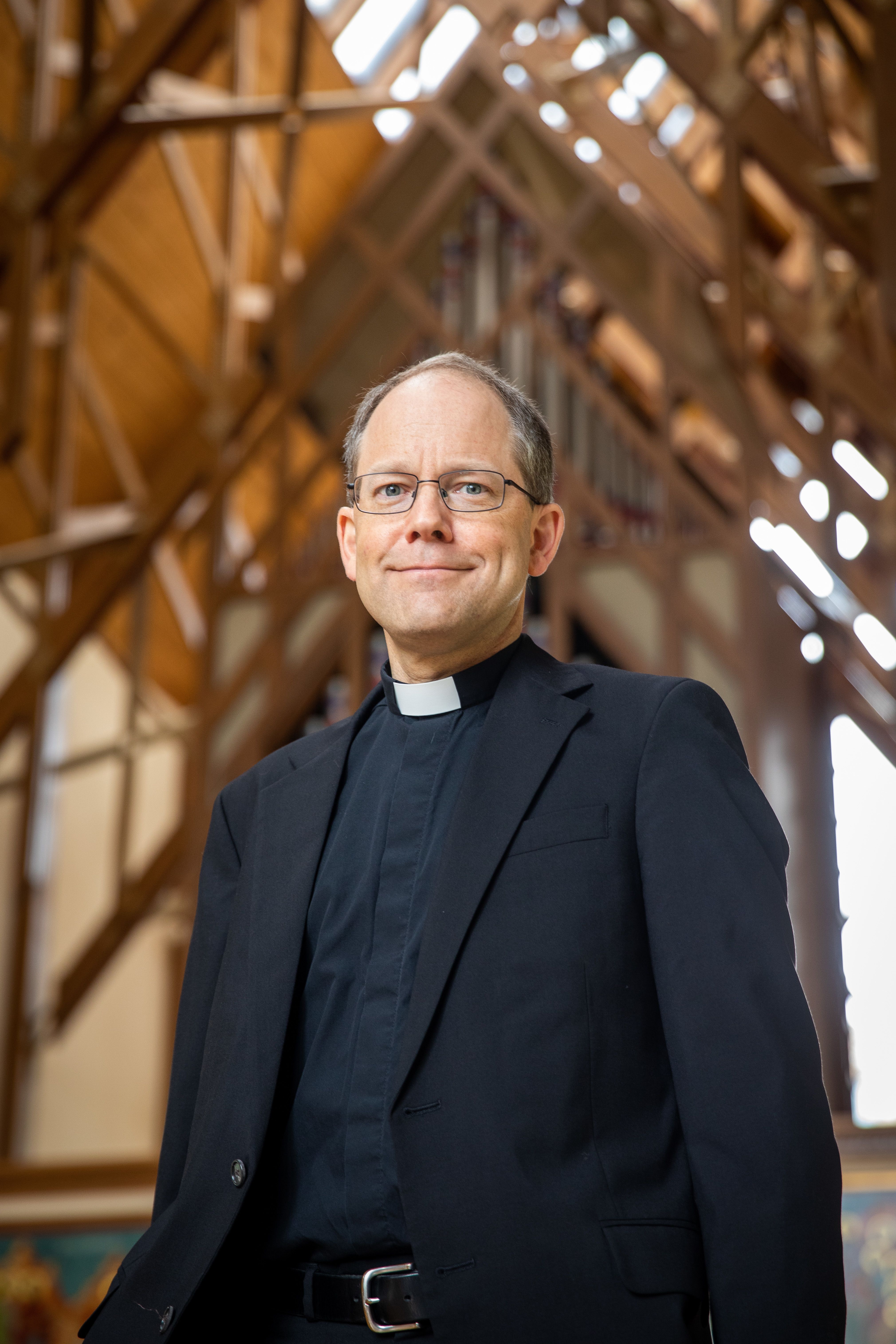
The Very Rev. James F. Turrell
The Very Rev. James F. Turrell

COVID’S SILVER LINING
One of the silver linings of the pandemic, of course, was that it brought “business as usual” to a grinding halt in churches all over the world, and in many instances, the cessation of daily activity allowed time to reflect and reevaluate. Many parishes discovered that much of the way they operated was based on historical precedent rather than what actually worked or was needed, and many priests and lay leaders have since resolved to do things differently going forward. The pandemic’s disruption also allowed parishes to discover what was truly valuable to them, and many clergy report sharing a newfound appreciation for things like congregational singing, Bible study, and in-person pastoral visits. Sheppard says that, during the turmoil of the past year and a half, he has learned that flexibility is a great gift, and the key to the church of the future. “The church is changing before our eyes,” he says. “The church has literally left the building—not because it wanted to, but because it had to. I believe that the brick-and-mortar church is slowly becoming obsolete. I am not saying that we should shut down the buildings,” Sheppard explains, “but that we need to be willing to go meet people where they are, listen to their needs, and figure out new ways to meet those needs.” Sheppard points to the creative thinking that allowed many churches to continue to meet in parking lots and on lawns during Covid. “Why not continue these services when the weather permits? We must be willing to let some things die in order for new things to be born. It’s a new season in the Church and we must be willing to enter this new season with our hands open to what the Lord may place in them.” Currie agrees, and says that one of the critical lessons he learned in seminary is the importance of adaptability. “Seminary taught me how to be flexible, and how to worship in the wilderness moments,” he explains. “It grounded me in the theology, so that I could pivot to meet new challenges, all the while understanding that there are many different ways of being an Episcopalian. That’s been very important during the pandemic, and it will continue to carry us forward.”
Many parishes discovered that much of the way they operated was based on historical precedent rather than what actually worked or was needed, and many priests and lay leaders have since resolved to do things differently going forward.
Hill says that despite his own parish’s growth, the reality is that The Episcopal Church is “shrinking in numbers and influence. But the truth of the matter,” he explains, “is that God is at work in our neighborhoods in ways that seem ‘secular.’ It is our job as priests to interpret the world through a lens of faith.” Hill participated in the Rev. Dwight Zscheile’s “Living Local, Joining God” as part of a learning cohort of parishes and dioceses, and says that the experience taught participants to dwell in Scripture, listen to the community, reflect, experiment, adapt, and begin again. “This pattern has helped us to survive, and maybe even thrive, during the pandemic,” Hill says. For Donald, the disruption of Covid was compounded by four natural disasters: hurricanes Laura and Delta, an ice storm, and a record flood.
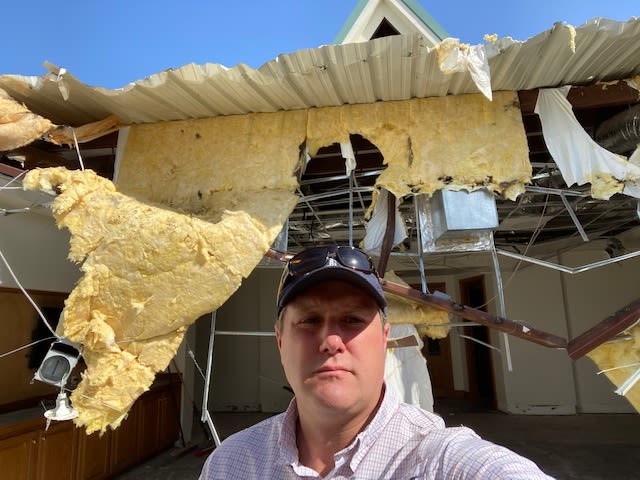
Seth Donald takes a photo of his church’s narthex after the storm.
Seth Donald takes a photo of his church’s narthex after the storm.
“Those events forced us to be adaptable like we have never been,” Donald says. “And those events made me realize that, particularly when people are facing stressful challenges, the church is needed. It is during these times of distress that the church is called to be a place of resurrection hope and Christian help.” Jenkins sees hope in the Church, too, particularly in the willingness of various factions and people to embrace change. “I think there are two Episcopal churches,” Jenkins explains. “One is clinging to tradition and some antiquated ideas that are not always very inclusive, and the other is the church that is taking it to the street, going out and meeting people on the margins and in the difficult places. We need both, and as long as we can face the mistakes we have made in our past that include, but are not limited to, exclusiveness, racism, slavery, and sexism, we can perhaps combine the old with the new, and combine tradition with creativity and energy.”
For Johnson, the future of the Church “involves building relationships, sharing meals, dwelling in the Word, knowing neighbors and community. It hopefully involves connecting to other faiths and ways of being God’s people since no one way has all the answers or pathways or gifts.” In Johnson’s view, connecting to other faiths may eventually lead to fewer, if any, denominations. “This may require actually declaring that there are very differing understandings of Christ and Christ’s call and it isn’t helpful for us all to be lumped together as ‘Christianity.’” Church buildings will be places for the community to come together, Johnson says, “and I am hopeful that there will be less emphasis on the documentation of things and people and less committees and more teams engaging in God’s work and God’s presence. The future of the church needs to look far more like a community and far less like an institution.”
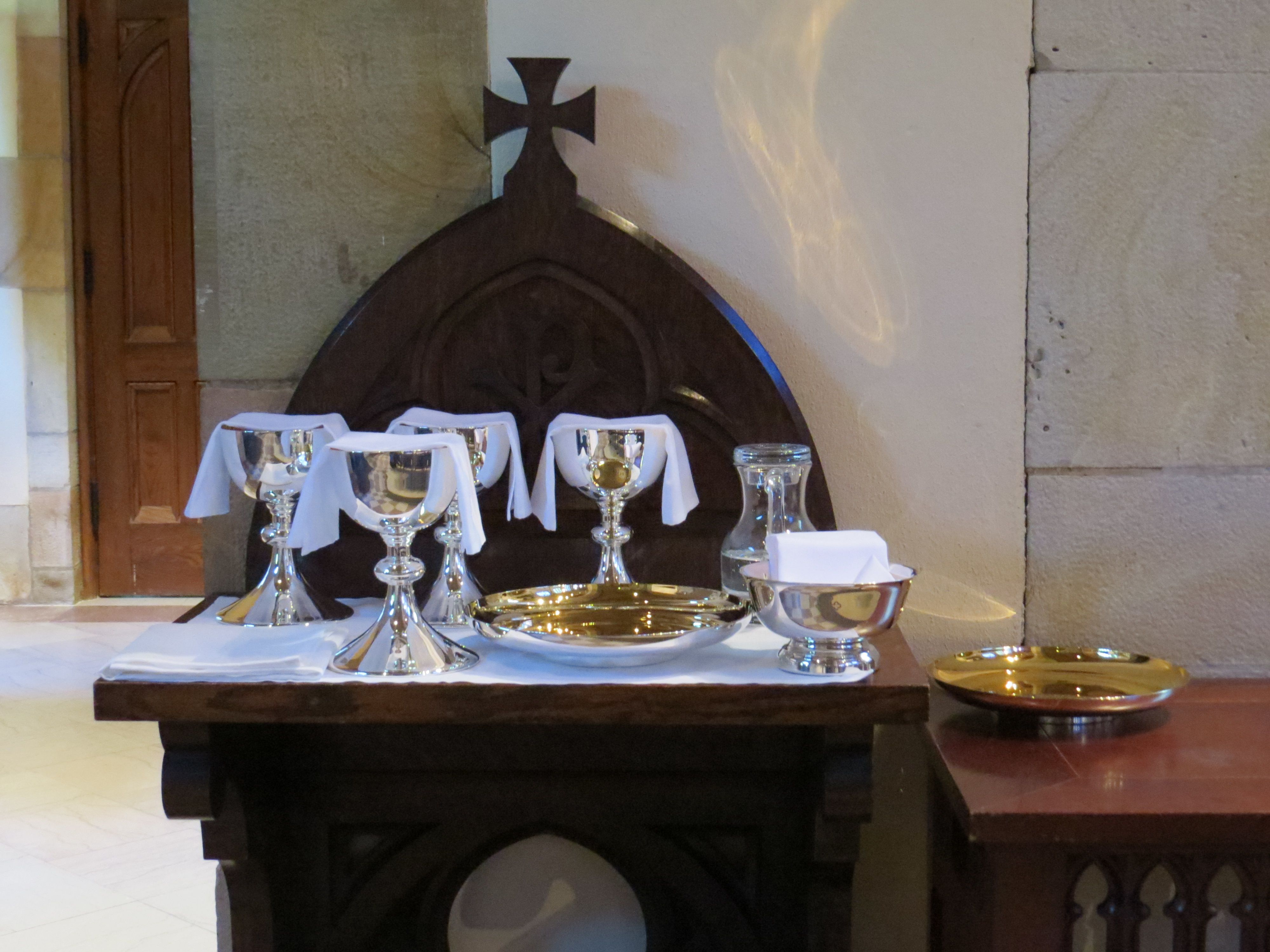
The sacrament of Holy Eucharist holds transformative power for those who pray together in sincerity and truth, Buchanan says, so while he cannot imagine “all the different expressions and contexts the Church will have in the future, I am persuaded that in our particular Anglican tradition it needs to include (at a minimum) the gathering together of people to receive the Gifts of God and the sending out of those same people to share the gifts. My vision for congregational ministry is rooted in the Postcommunion Thanksgiving Prayers of the Holy Eucharist,” Buchanan explains. “If our people are truly willing to see themselves as being the living members of the Body of Christ, what is it exactly that we could not do for the glory of God in the world today?"
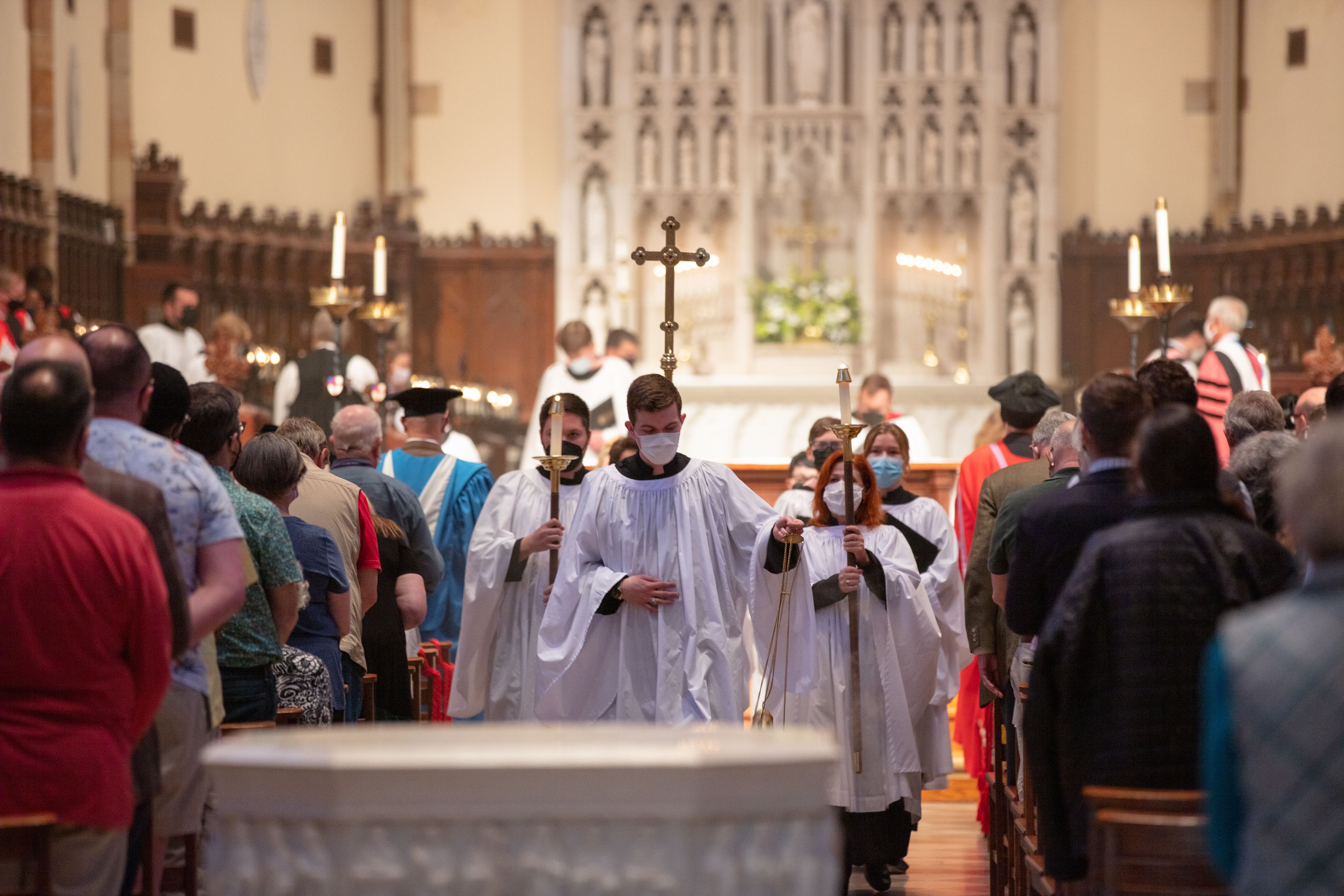
FORMATION, CONTENT, AND HOPE FOR THE FUTURE
The School of Theology recognizes the need to continue to form clergy who are rooted in the Church and prepared to meet the challenges of the future. It does so while also recognizing the limitations imposed by time and external forces. After all, an M.Div. program is only three years, King explains, and while the seminary strives to provide as many useful course offerings as possible, the answer is not to sacrifice formation for content. “I’ve never heard any graduate say that they wish they’d spent less time in chapel,” King says. “Community and worship are critical, which is why we do our best to accommodate the reality of people’s lives—the fact that they have families, for instance—while still insisting that the residential seminary experience is the best model for both formation and content.” To meet the needs of clergy at all stages of their careers, King and Turrell are working with faculty and staff to make theological formation an ongoing experience. “We are beginning to develop a series of continuing education offerings that will allow seminary graduates to return for two- or three-day workshops on topics that our alumni would find helpful.” The School of Theology has also expanded its Doctor of Ministry degree options. “We are offering hybrid classes,” King explains, “which will be taught at Sewanee but also available online, for clergy who want more education that is leading to a degree.” While D.Min. studies previously took place during the summer, King says that the School of Theology recognizes that the summer-only schedule takes too long for some students. “As a result, we will now have some courses available during the academic year and have Advent, Lent, and Summer terms open to D.Min. students,” King explains.
To meet the needs of clergy at all stages of their careers, King and Turrell are working with faculty and staff to make theological formation an ongoing experience.
Despite the dire warnings and bleak forecasts popular in the press, at the School of Theology, the future is full of hope, and this sentiment is echoed by its graduates. “I think we can make a difference in the lives of people and be the transformative force that God is calling us to be,” Jenkins says. Moon says that the church of the future will continue to strive to bring people together, just as it always has. “We will continue to need to dream and create ways where the community can come together and see the beauty of creation, a space where people know that they are not alone.” Donald agrees. “As people of hope, and help, and never of hatred, the church lives into its role as reconciler, unifier, and spreader of the gospel,” he says. “What we do as followers of Jesus makes a difference.” Amen!
